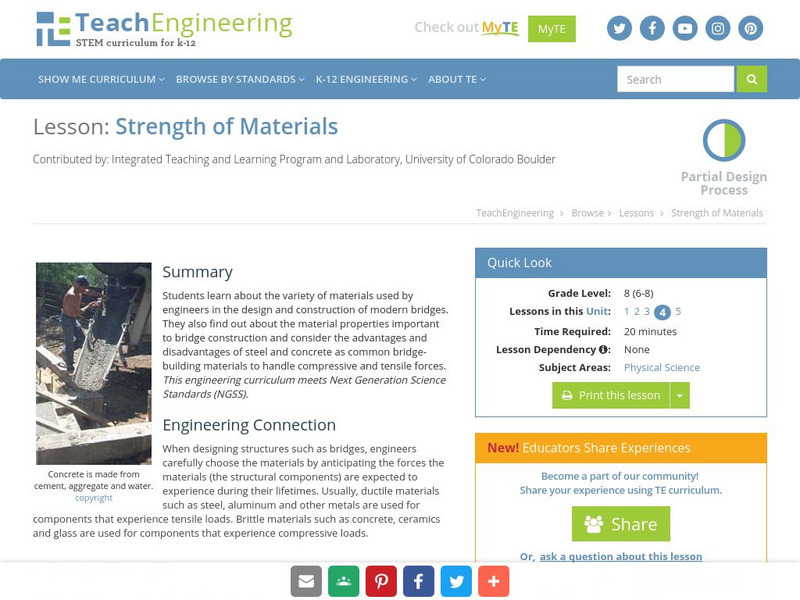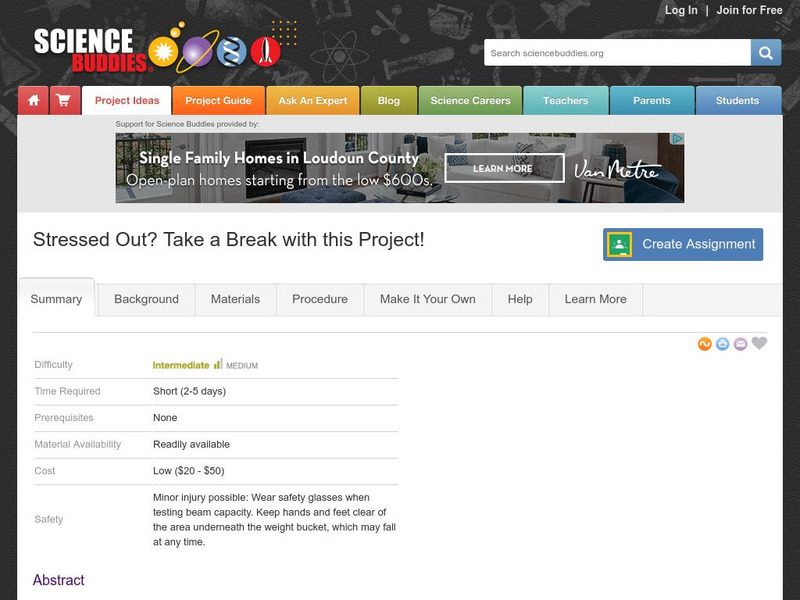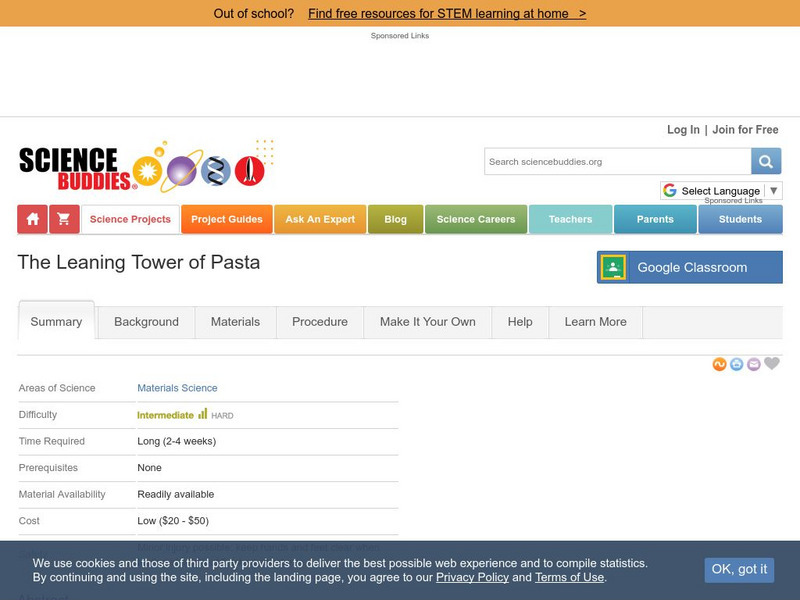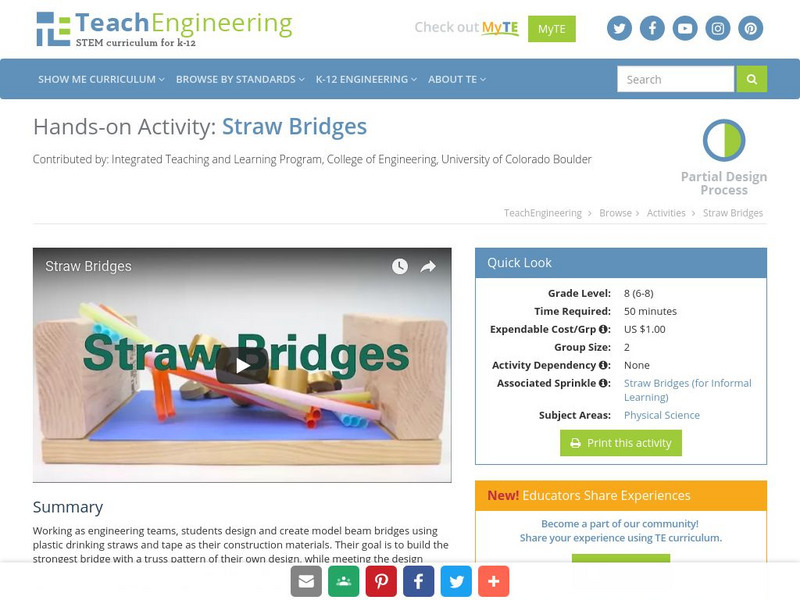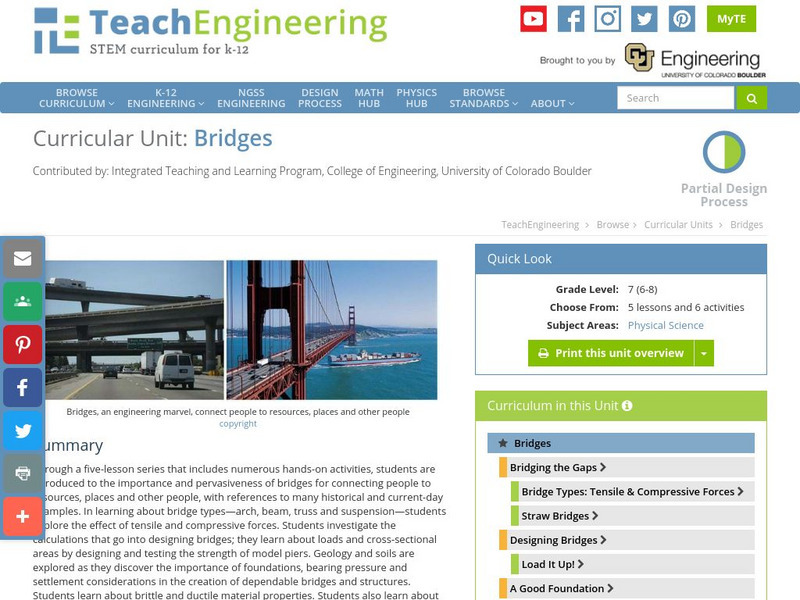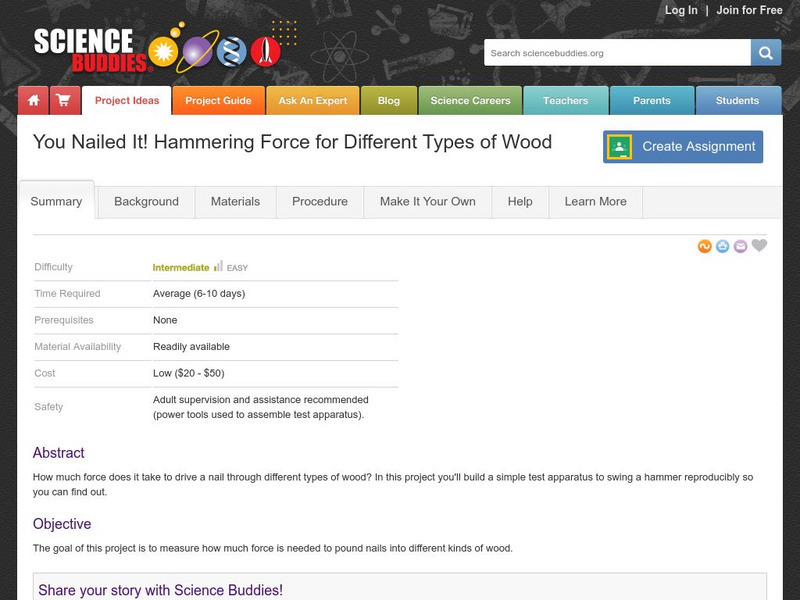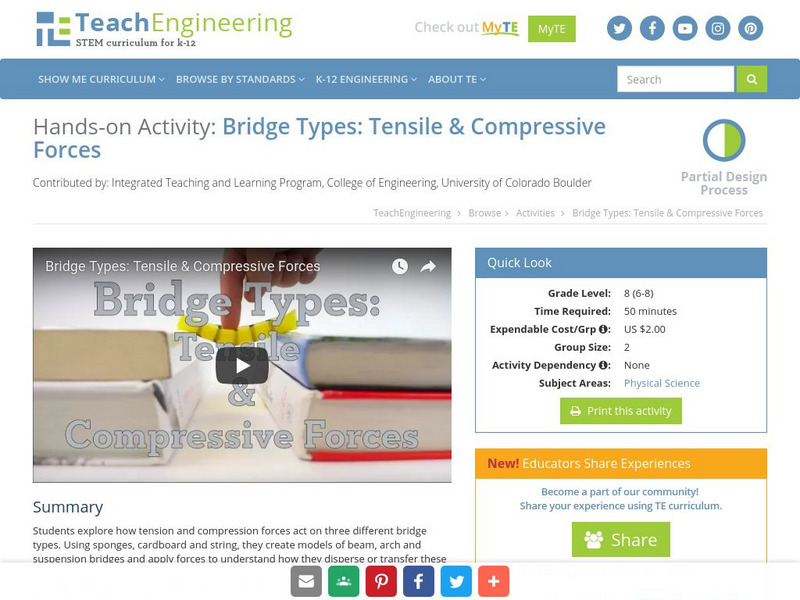TeachEngineering
Teach Engineering: Strength of Materials
Learners learn about the variety of materials used by engineers in the design and construction of modern bridges. They also find out about the material properties important to bridge construction and consider the advantages and...
Science Buddies
Science Buddies: Fallen Arches: The Surprising Strength of Eggshells
Arches have been used for structural engineering since ancient times. This experiment tests the strength of a naturally occurring arch shape: the shell of an egg. How much weight do you think an eggshell can support?
PBS
Pbs Learning Media: Curious George Stem: Build a Wall Lesson Plan
A hands on lessons where students explore how materials and design affect the strength of a structure. After watching an excerpt Curious George, students build newspaper walls like George did and try out different solutions for making...
archKIDecture
Arch Ki Decture: Building With Steel and Glass
Using the John Hancock Center as an example, ArchKIDecture explains how a steel skeleton gives a building strength and permanence.
Other
Design Build: Exploring the Fundamental Requirements of Structural Design [Pdf]
In this activity unit from the Science Teachers' Association of Ontario (STAO), students fold paper to explore the properties and shapes of materials that give structures their stability and strength. They record their ideas as they...
Science Buddies
Science Buddies: Build the Best Paper Bridge
Find out what makes a bridge strong in this fun activity as you build simple bridges with paper and test to see how much weight they can hold.
Science Buddies
Science Buddies: How Does Ratio of Sand to Cement Affect Strength of Concrete?
Concrete is one of those things that most of us don't think about much, yet we use it every day. We walk on concrete sidewalks, drive on concrete roads, and live and work in buildings with foundations made of concrete. It is a durable...
University of Virginia
University of Virgina: Structural Behavior and Design Approaches
From the Introduction to Structural Design web site. A page of well-written lecture notes on the various structural qualities of building materials. A comparison is made of the strength, stiffness, stability and ductility of materials,...
Science Buddies
Science Buddies: Stressed Out? Take a Break With This Project!
Is an I-beam as strong as a solid beam of the same size? What if you include weight in the comparison: which beam has the greater strength-to-weight ratio? Would an I-beam be stronger than a solid rectangular beam of the same weight?...
Science Buddies
Science Buddies: The Leaning Tower of Pasta
Here's a project for a budding architect or structural engineer. Can you make a strong, lightweight tower using only uncooked spaghetti and white glue? In this project, you'll learn about materials testing and apply what you learn to...
TeachEngineering
Teach Engineering: Breaking Beams
Students learn about stress and strain by designing and building beams using polymer clay. They compete to find the best beam strength to beam weight ratio, and learn about the trade-offs engineers make when designing a structure.
TeachEngineering
Teach Engineering: Engineering for the 3 Little Pigs
The purpose of this activity is to demonstrate the importance of rocks, soils and minerals in engineering and how using the right material for the right job is important. The students build three different sand castles and test them for...
TeachEngineering
Teach Engineering: Straw Bridges
Working as engineering teams, students design and create model beam bridges using plastic drinking straws and tape as their construction materials. Their goal is to build the strongest bridge with a truss pattern of their own design,...
TeachEngineering
Teach Engineering: Mechanics Mania
Through ten lessons and numerous activities, students explore the natural universal rules engineers and physicists use to understand how things move and stay still. Together, these rules are called "mechanics." The study of mechanics is...
TeachEngineering
Teach Engineering: Bridges
Through a five-lesson series that includes numerous hands-on activities, students are introduced to the importance and pervasiveness of bridges for connecting people to resources, places and other people, with references to many...
Science Buddies
Science Buddies: You Nailed It! Hammering Force for Different Types of Wood
This Science Buddies project explains how to build a mechanism that will reproducibly swing a hammer so you can determine the amount of force needed to hammer a nail through various densities of wood. The Science Buddies project ideas...
Other
The Giraffe Heroes Project
The Giraffe Heroes Project honors people "who stick their necks out for the common good." This site tells the stories of these ordinary people who have shown the character to stand up against injustice or misfortune in real, effective...
PBS
Pbs Teachers: Tall, Sturdy Building
Build the tallest tower possible from stale marshmallows and spaghetti, which will support the weight of a toy gorilla. Make improvements on the design so that it is as stable as possible while keeping the cost of materials within a...
TeachEngineering
Teach Engineering: Strong as the Weakest Link
To introduce the two types of stress that materials undergo - compression and tension - students examine compressive and tensile forces and learn about bridges and skyscrapers. They construct their own building structure using...
Curated OER
John Hancock Building in Chicago
Using the John Hancock Center as an example, ArchKIDecture explains how a steel skeleton gives a building strength and permanence.
NC State University
The Engineering Place: Construction
Choose a characteristic and have students build a structure that will have it, using whatever materials are available. For example, it could be as tall or as strong as possible.
TeachEngineering
Teach Engineering: Requirements & Constraints: Making Model Parking Garages
The difference between an architect and an engineer is sometimes confusing because their roles in building design can be similar. Students experience a bit of both professions by following a set of requirements and meeting given...
TeachEngineering
Teach Engineering: Bridge Types: Tensile & Compressive Forces
Students explore how tension and compression forces act on three different bridge types. Using sponges, cardboard and string, they create models of beam, arch and suspension bridges and apply forces to understand how they disperse or...
Science Buddies
Science Buddies: Make Your Own Seismograph
A seismograph is a tool scientists use to record earthquakes and measure their strength. In this activity you will build your own seismograph using simple materials.
